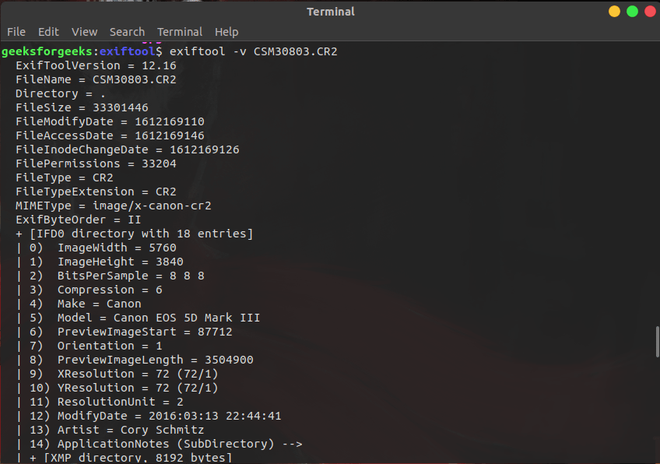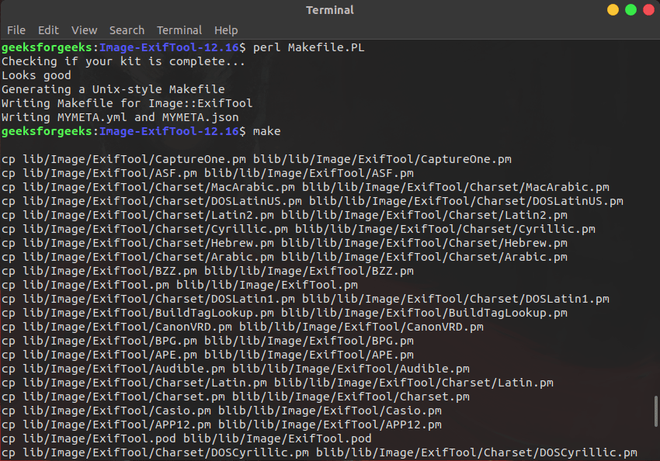
It supports many image, audio and video file types. This unit corresponds to a PostScript point. Since we passed 2 for the -f option and 3 for the -l option as arguments, pdfinfo printed the page information for these pages. The -f option specifies the first page to examine, while the -l option specifies the last page to examine. Producer: Acrobat Distiller 7.0.5 (Windows)ĬreationDate: Mon Feb 4 10:16:29 2013 EST Title: Introduction to Programming Languages If we want to see the page information of other pages, we can use the -f and -l options: $ pdfinfo –f 2 –l 3 example.pdf pdfinfo just prints the information of the first page by default if it’s called without any options. exiftool image.The page size and page rotation in the output of pdfinfo belongs to the first page. Just navigate to the image file directory and type the following command. To use ExifTool on a image file, this works similar to macOS method. Sudo make install How to Use ExifTool on Ubuntu Install ExifTool in Ubuntu by perl Makefile.PL Unzip the package and navigate into the extracted folder using the following commands cd

Go to the official ExifTool homepage and find the latest Linux version. In this example, I will be installing and using it on Ubuntu distribution. Install and Use ExifTool on Linux (Ubuntu) Delete these two files to uninstall ExifTool. You will now see two files namely “exiftool” and “lib”. To uninstall ExifTool from your Mac, type “open /usr/local/bin” (without the quotes) into Terminal. Your Terminal will now display the EXIf metadata of the file. Now, run the exiftool application against the image file (shown below) exiftool photo.jpg In this example, my image file is in the Downloads folder.

Navigate the Terminal into the exact folder where the image file resides. Open the Terminal app by clicking on the magnifying glass and type in “Terminal” If you are stopped with an “unidentified developer” message and unable to proceed with the installation, make sure you go to, , unlock the padlock with your Mac password and allow the app to pass through. Install on Macĭouble-click to install the dmg package and follow the instructions.

Go to the official ExifTool homepage and find the latest macOS version.

Your Windows command prompt will automatically open now to display the Exif metadata output. Now, drag and drop your image or multimedia file to the ExifTool executable file. You can move the “exiftool(-k).exe” to any directory folder you want. There is no installation required here, as you are using the standalone lightweight ExifTool executable. Unzip and you will see the ExifTool file named as “exiftool(-k).exe”. Go to the official homepage of ExifTool and download the stand-alone Windows executable version. Here are the steps below for the three (3) different operating systems. How to Install and Use ExifTool on Windows, Mac and Linux?


 0 kommentar(er)
0 kommentar(er)
